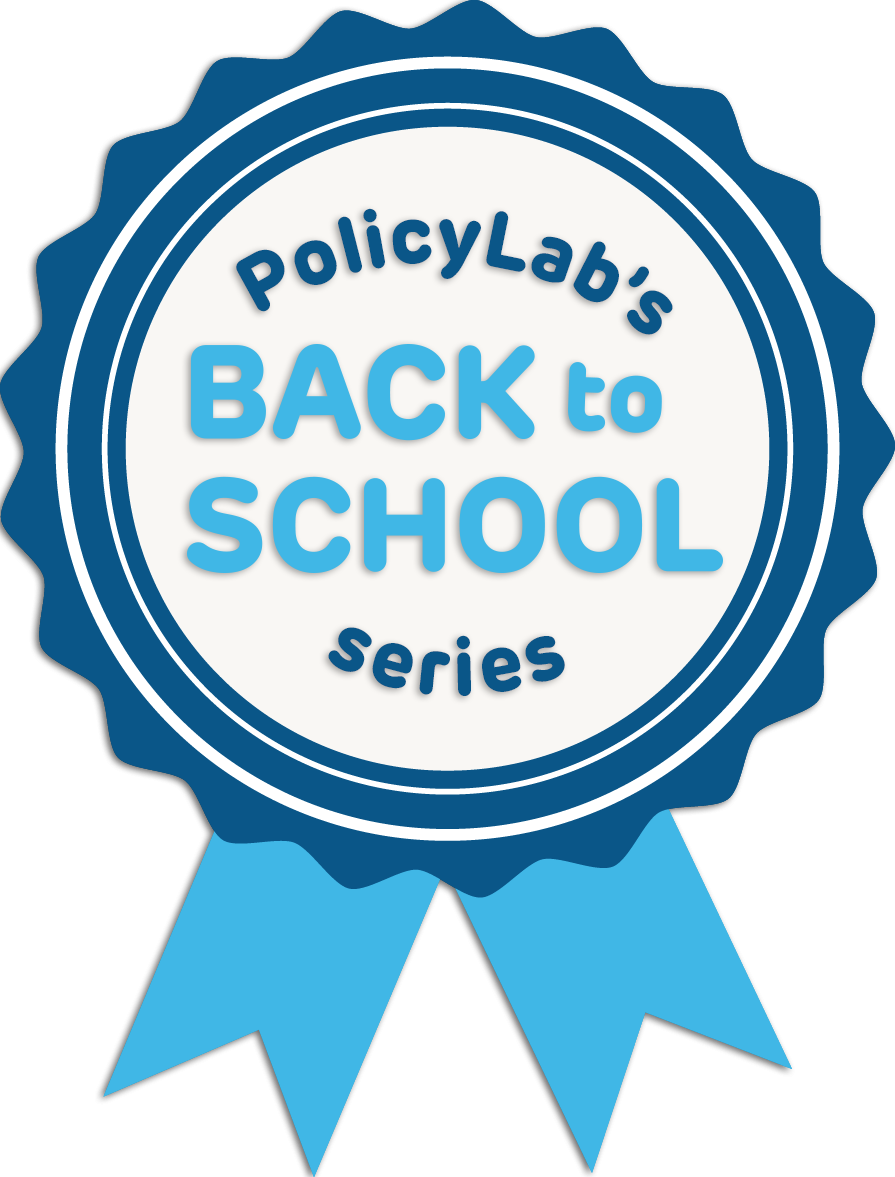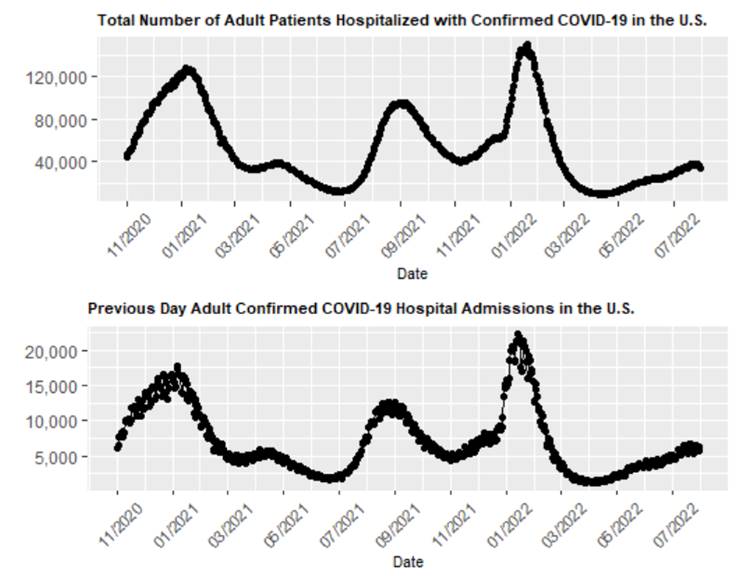COVID-19 Outlook: Schools Update Health and Safety Plans For the New Academic Year

Editor's Note: This post is part of this year’s “Back to School” series in which our experts and guest authors discuss the need to support the health and well-being of youth as they return to school. For more, follow our hashtag #PolicyLabGoesBacktoSchool on Twitter.
As schools begin to open across the United States, leaders of schools and early care and education settings are busy assessing  the current state of the pandemic and reviewing guidance from local health departments to update their health and safety plans. Although COVID-19 transmission remains high in many areas of the country, a lower proportion of cases have resulted in hospitalization or death compared to last year. This week’s COVID-Lab update highlights these current nationwide trends in COVID-19. This shift allows schools and early care and education settings to adjust health and safety plans and prioritize a return toward normal operations and extracurricular activities—the underlying principle behind Children’s Hospital of Philadelphia (CHOP) and PolicyLab’s new recommendations for the 2022-23 school year, which we’ll summarize in this post.
the current state of the pandemic and reviewing guidance from local health departments to update their health and safety plans. Although COVID-19 transmission remains high in many areas of the country, a lower proportion of cases have resulted in hospitalization or death compared to last year. This week’s COVID-Lab update highlights these current nationwide trends in COVID-19. This shift allows schools and early care and education settings to adjust health and safety plans and prioritize a return toward normal operations and extracurricular activities—the underlying principle behind Children’s Hospital of Philadelphia (CHOP) and PolicyLab’s new recommendations for the 2022-23 school year, which we’ll summarize in this post.
Current trends we are seeing:
- Nationally, confirmed adult hospital census for COVID-19 infection neared 40,000 patients this past week, well below a peak census of nearly 100,000 patients last summer.
- National adult hospital admissions and census numbers are beginning to decline, led by the Southeast, Lower Midwest and greater West. Up until this past week, Florida, Texas and California accounted for nearly one-third of hospitalizations nationwide. Hospitalizations in each of these states are now declining.

The above graphs show the total number of adult patients hospitalized with confirmed COVID-19 in the U.S. (top) and the previous day adult confirmed COVID-19 hospital admissions in the U.S. (bottom).
- There has been a subtle increase in hospitalizations along the upper rim of the country (e.g., Alaska, Minnesota, Vermont), as well as along the I-80 corridor and into the Mid-Atlantic region. Such increases at the beginning of August are reminiscent of last summer, when trends in increased fall/winter transmission rates and hospitalizations began to take shape in these communities.
- Pediatric hospital census for confirmed COVID-19 infection reached 1,200 children this summer, down from more than 1,500 children last summer. Most pediatric hospitalizations are in the South (accounting for nearly two-thirds of all hospitalized children), where vaccination rates of children remain much lower than in other regions.

The above graphs show the total number of pediatric patients hospitalized with confirmed COVID-19 in the U.S. (top) and the previous day pediatric confirmed COVID-19 hospital admissions in the U.S. (bottom).
Even as COVID-19 transmission remains high, schools prepare a return to normal
Early August marks a turning point across the U.S. as families begin to return to school year routines. Young adults return to college, and many children, particularly in the South, return to school and extracurricular activities.
As schools reopen, and as early care and education programs ready themselves for the fall, their leaders are seeking to align COVID-19 health and safety plans with those routinely used for other respiratory viral illnesses school nurses and early care and education staff may confront throughout the year. With improving population immunity against severe infection, whether through vaccination or prior exposure to COVID-19 infection, this is a year in which schools and early care and education settings are prioritizing the optimization of in-school classroom time and a resumption of pre-pandemic normal activities.
In this context, CHOP and PolicyLab released updated recommendations for COVID-19 mitigation for the 2022-23 school year. The recommendations aim to assist schools and early care and education settings that are still navigating the variable requirements of local health departments, while promoting a less stringent approach to COVID-19 mitigation overall. They focus on remaining needs for isolating those with seasonal respiratory illness, adopting practical quarantine strategies (if required by local authorities), and responding to large outbreaks that might exacerbate school absenteeism during periods of high community transmission.
Collectively, the recommendations aim to guide schools and early care and education settings toward COVID-19 management plans that are consistent with their management of other infectious respiratory illnesses throughout the school year, while remaining nimble should rising transmission threaten to disrupt the school day and extracurricular activities. As schools and early care and education settings navigate their choices for COVID-19 mitigation this year, they can do so with the confidence that the declining risk of severe disease allows them to prioritize their focus on curriculum and the greater well-being of their communities.
Jeffrey Gerber, MD, PhD, is associate chief clinical research officer of Children’s Hospital of Philadelphia's (CHOP) Research Institute and co-author of PolicyLab and CHOP's Guidance for Updated COVID-19 School Mitigation Plans for Academic Year 2022-23.

